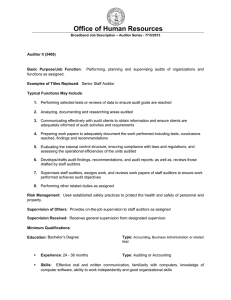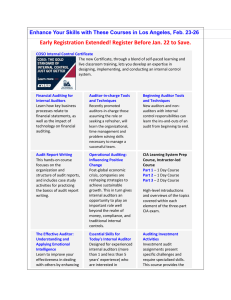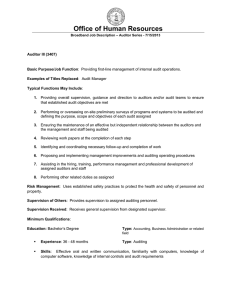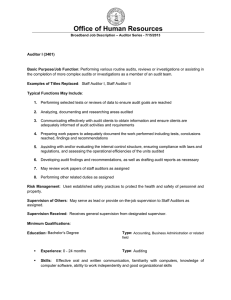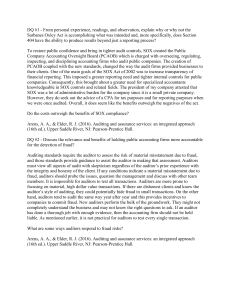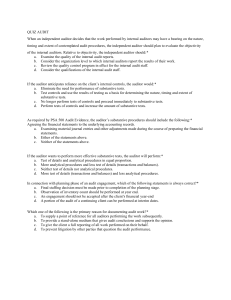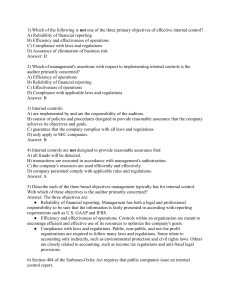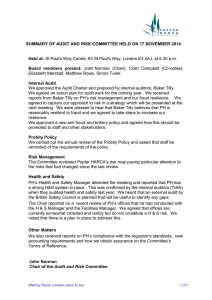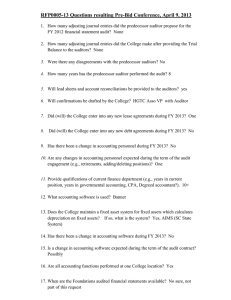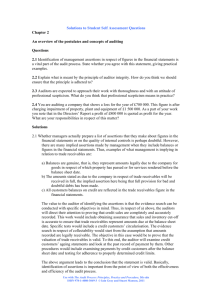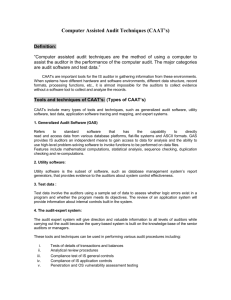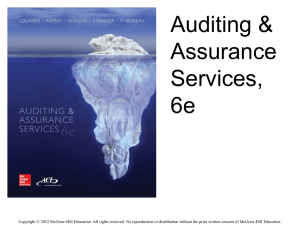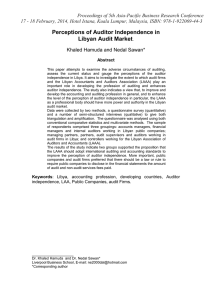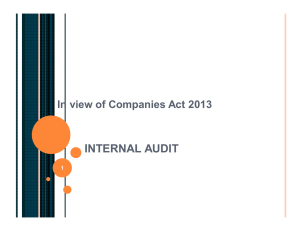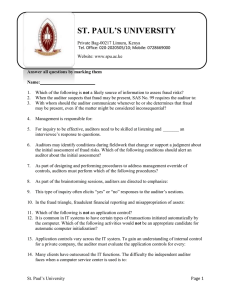Case
advertisement
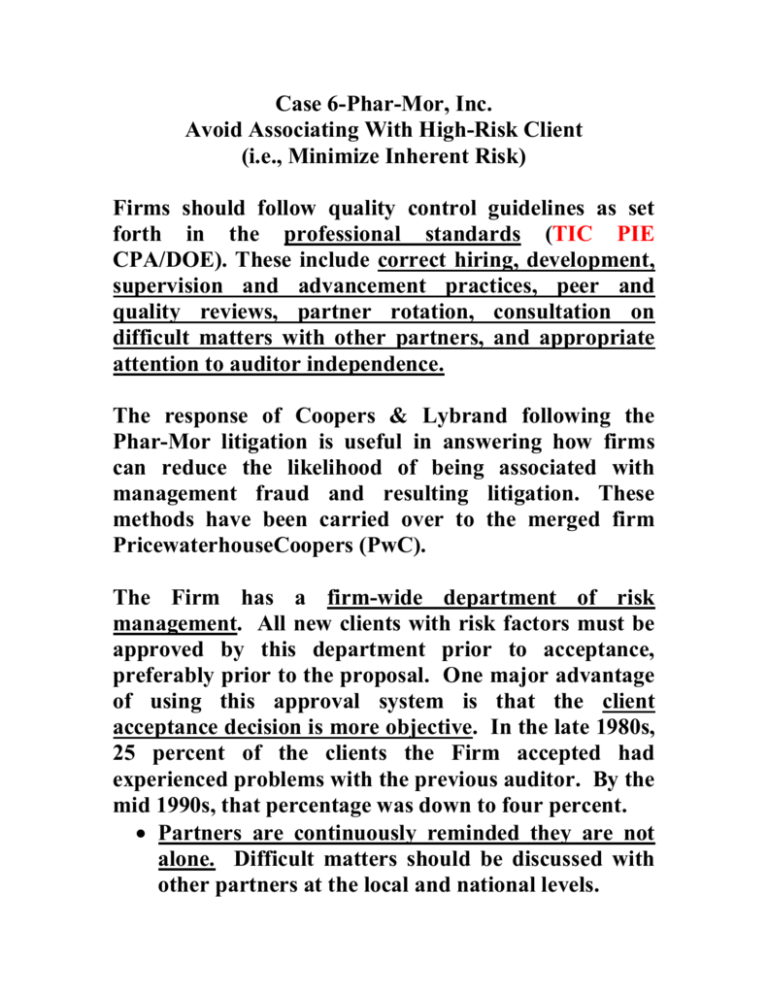
Case 6-Phar-Mor, Inc. Avoid Associating With High-Risk Client (i.e., Minimize Inherent Risk) Firms should follow quality control guidelines as set forth in the professional standards (TIC PIE CPA/DOE). These include correct hiring, development, supervision and advancement practices, peer and quality reviews, partner rotation, consultation on difficult matters with other partners, and appropriate attention to auditor independence. The response of Coopers & Lybrand following the Phar-Mor litigation is useful in answering how firms can reduce the likelihood of being associated with management fraud and resulting litigation. These methods have been carried over to the merged firm PricewaterhouseCoopers (PwC). The Firm has a firm-wide department of risk management. All new clients with risk factors must be approved by this department prior to acceptance, preferably prior to the proposal. One major advantage of using this approval system is that the client acceptance decision is more objective. In the late 1980s, 25 percent of the clients the Firm accepted had experienced problems with the previous auditor. By the mid 1990s, that percentage was down to four percent. Partners are continuously reminded they are not alone. Difficult matters should be discussed with other partners at the local and national levels. Each year the Firm identifies the 200 highest risk continuing clients. These engagements go through intense scrutiny as the firm challenges whether the client should be retained. The Firm has “fired” several high-risk clients in the last few years. Partners are taught that it is cause for celebration when they lose a “bad” client. The Firm’s engagement planning process specifically identifies factors that might indicate incentive, or the existence of management fraud. Based on a study of auditor litigation, the Firm has found that 85 percent of lawsuits against auditors are initiated when the client company fails. Therefore, the Firm runs prospective and continuing clients through viability screens including sophisticated quantitative failure prediction models. In addition to the quantitative measures, the Firm considers several qualitative factors such as industry risk, company risk, management risk, corporate governance, oversight risk, etc. The Firm studies the personality factors of the client and the engagement team to ensure a proper match. The Firm has found that most audit failures have resulted because partner objectivity is compromised. With this in mind, they conducted studies of partners who have been highly successful as well as those who have had problems with former audits to begin to understand the warning signs. They now monitor more closely partner traits and situations that may compromise objectivity. When necessary, the Firm provides objectivity counseling to the auditors. For example, an audit team may need counseling before an audit of a high-risk client that has aggressive and domineering management. The Firm demands better documentation of audit decisions. They have found they can defend decisions that are written in the working papers easier than they can defend auditors’ recollections stated years after the fact.
